l See pages 28-29
Equestrian

l See feature on page 19
Win!

l See R'n'R p5


See pages 16-17

l See pages 28-29
Equestrian

l See feature on page 19
Win!

l See R'n'R p5


See pages 16-17
l See page 30









PRINCESS ANNE gave an iconic RAF aircraft a right Royal send-off as the mighty Hercules was retired from service.





HRH The Princess Royal, who is also Brize Norton’s Honorary Air Commodore, reviewed 47 Sqn as the unit that has operated the transporter since the Sixties stood down.

Marching to music by the Central Band of the RAF against the backdrop of two static C-130s, veterans and current personnel witnessed one of the last spectacular flypasts by the type affectionately nicknamed ‘Fat Albert.’ The Hercules retires on June 30 after 57 years spearheading combat missions and humanitarian relief efforts worldwide.
See pages 3,4,5


HQ Air Command High Wycombe Buckinghamshire HP14 4UE



Editor: Simon Williams


Email: editor@rafnews.co.uk
Features Editor: Tracey Allen
Email: tracey.allen@rafnews.co.uk
News Editor: Simon Mander
Sports reporter Daniel Abrahams
Email: sports@rafnews.co.uk

All advertising: Edwin Rodrigues
Tel: 07482 571535
Email: edwin.rodrigues@ rafnews.co.uk
Subscriptions and distribution:
RAF News Subscriptions

c/o Intermedia, Unit 6 e Enterprise Centre, Kelvin Lane, Crawley RH10 9PE

Tel: 01293 312191
Email: rafnewssubs@ subscriptionhelpline.co.uk
BRITAIN IS to provide an extra £16 million in humanitarian aid for Ukraine to support victims of the destruction of the Nova Kakhovka dam.
The cash is to help Red Cross and UN aid agencies assist thousands of people in the Kherson area affected by flooding and continuing Russian attacks.
The UK is also providing rescue boats, community water filters, water pumps and waders to local emergency services, which are expected to start arriving by next week.
The announcement comes as water levels continue to rise engulfing other towns along the Dnipro River leaving many in need of food, water, and basic supplies.

Foreign Secretary James Cleverly said: “Flooding from the destruction of Kakhovka dam is having an untold impact on over 32,000 people living in Kherson, and thousands more in the surrounding area.

“Our funding is playing a vital role in helping Ukrainian services and aid organisations evacuate people and get help to those in need.
“We will continue to stand by
HUMANITARIAN CRISIS: Floods following Russian attack have hit thousands in Kherson region
Ukraine in dealing with this terrible

The UK is also set to host the
Ukraine Recovery Conference later this month to bring together governments and industry leaders
to develop a concerted multi-sector plan to help Ukraine recover from Russia’s illegal invasion.
Chowdhry can relate
Actor Navin
RAF News Room 68 Lancaster Building
BRIZE NORTON-BASED 47 Sqn, which has flown the C-130J variant on more than 20 years of continuous operations in Iraq and Afghanistan, will lay up its unique Standard at Cranwell’s College Hall Officers’ Mess until stood up again.
Formed in the Royal Flying Corps in Beverley in March 1916, the unit was initially designated for home defence and not issued any aircraft until April, when four BE2C biplanes were transferred from 15 Reserve Sqn.
During its 107-year history the Sqn has operated worldwide with different aircraft until in 1968 it became a C-130 Hercules unit based at Fairford, moving shortly after to Lyneham and then to its final Oxfordshire home in 2011.
The C-130 fleet has been an
integral part of RAF air power for six decades, contributing to every British conflict since it was brought into service, on airlifts and airdrops often in the most remote and austere areas of the world.
Its last operation fittingly saw 47 Sqn return to Sudan, which it left 82 years ago and a place it called home for the longest time apart from Lyneham.
Unable to access Khartoum airport, itself established by 47 Sqn in 1927, the Hercs [alongside Atlas A400M] evacuated more than 2,000 Embassy staff and British passport holders from a degraded concrete strip north of the city.
And in September 2021, the C-130Js played a key role in Britain’s largest humanitarian aid operation for 70 years – rescuing 15,000 evacuees, often under fire, from Kabul airport on Operation Pitting as the Taliban took control of Afghanistan.
More than half of 47 Sqn’s personnel are expected to transfer to the 22-strong Atlas (A400) fleet and other RAF aircraft, continuing the Hercules’ legacy forged over the past 57 years.
OC 47 Sqn, Wg Cdr James Sjoberg, said: “It is a great honour to command 47 Sqn at this historic moment. I am extremely proud of the people on my Sqn and across the wider Hercules family, they have delivered repeatedly on operations.

“I wish to pay tribute to them, and their families, for their exceptional contribution to Defence during my tour and over nearly 57 years of Hercules operational service.
“Whilst the retirement of the Hercules and the laying-up of the 47 Sqn standard is a sad moment for many of us, I have full confidence that the people of the RAF Air Mobility Force will continue to deliver excellence around the globe.”
TYPHOONS scrambled twice in less than 24 hours to intercept multiple Russian aircraft flying over the Baltic Sea.

In the latest launch RAF fighters took off to track Antonov An-12 Cub and An-72 Coaler transporters flying south towards Russia’s Kaliningrad Oblast.
The 1(F) Sqn jets were then re-tasked to shadow two Tupolev Tu-22M Backfire bombers and two Su30SM Flanker H fighters transiting from mainland Russia over the Gulf of Finland and the Baltic Sea.


Earlier, Typhoons and Swedish Air Force Gripens scrambled to intercept a Russian Air Force IL-20 Coot A and a Su-27 Flanker B flying close to Nato airspace.
On both occasions the Russian aircraft did not communicate with the relevant Flight Information Regions (FIRs) but remained in international airspace and flew in a professional manner.
On the latest mission the Typhoons were joined by Finnish F-18s as they escorted the Backfires and the Flanker through the Gulf of Finland, later handing over to Swedish Gripens.
Portuguese and Romanian F-16s, based out of Siauliai Airbase in Lithuania, were also scrambled to escort the Russian aircraft as they transited further south through the Latvian and Lithuanian FIRs.
Defence Secretary Ben Wallace said: “These intercepts are a stark reminder that the RAF is always ready to defend our skies and those of our Allies, while the coordinated action by several air forces serves as well as a clear demonstration of the value of our international alliances.”
NATO BALTOPs annual exercises are currently ongoing in the Baltic Sea and Russian aircraft have been monitoring Allied vessels throughout.
PRINCE EDWARD met the latest Ukrainian troops currently honing their warfighting skills in the UK on a recent visit.


The Duke of Edinburgh took the opportunity to talk with instructors and trainees on the multi-national British-led Op
Interflex training mission. The scheme is for new volunteer recruits to the Ukrainian Armed Forces with little to no previous military experience, to teach them the skills required to survive and be effective in frontline combat.
and pilot from 19902008, serving across the globe on the C-130 as part of 47 Sqn

THE HERCULES, or ‘Fat Albert’ as it is affectionately known, leaves RAF service after 56 years of frontline duty during which crews have risked and given their lives to get the job done.
The list of the C-130’s operations and exploits reads like an action movie script. The aircraft has also starred in a few of those too.

Each decade has seen pivotal operations, starting in 1967, where, within a matter of months of being delivered, the aircraft were pressed into service in Aden, rescuing the British forces.
In 1972, the Hercules made front page news by deploying four special forces bomb disposal experts on to the QE2 mid-Atlantic, following a bomb threat.
It turned out to be bogus, but the exploits of this 47 Sqn crew and the troops it carried were the inspiration for the 1974 movie Juggernaut, featuring Anthony Hopkins and Richard Harris.
The 1980s were a pivotal decade as the fleet adopted new capabilities to counter threats from enemy action and mother nature.
The first was the Falklands conflict, where the aircraft acted as an airbridge for the fleet sailing south, as well as undertaking covert operations in Chile.
There was also a plan to assault airfields in Argentina (Operation Mikado), which wasn’t needed, as it may have been a one-way mission.
The conflict saw the development of the use of Night Vision Goggles with the aircraft and the use of long-range internal fuel tanks, followed by the fitting of a probe to allow air-to-air refuelling, changing the utility of the platform massively.
From dropping stores as a lifeline for ships, in 1984 the fleet was able to pivot to dropping stores to save lives, as the famine in Ethiopia was
killing tens of thousands.

The Herc crews and 47 Sqn Air Despatch (RLC) deployed to the region and once again, using their ingenuity and can-do attitude, devised a new way of air-dropping grain sacks that would preserve the stores, as well as reducing the risk to the crews, who previously had to land to unload.
During a short, but crucial period, throughout the famine relief operation the Herc carried out 2,152 sorties, each carrying about 16 tons of lifesaving cargo.

The 1990s were an exceptionally busy decade for the crews at RAF Lyneham, dominated by the Gulf and Saddam Hussain’s invasion of Kuwait (Op Granby), as well as famine relief operations in Somalia (Op Provide Comfort) and 47 Squadron (SF Flight) flying into the besieged city of Sarajevo (Op Cheshire).
These operations tested the skills of the crews as they developed and employed pioneering ways of operating in hostile environments, on three continents.
The ‘train hard, work hard, play hard’ ethos of the Hercules fleet is legendary, but this was also a decade where it wasn’t enemy action that caused loss of life, but a training accident in Scotland, where during a low-level manoeuvre in Glen Tilt, the aircraft (XV 193) stalled and was lost with all nine crew.
The noughties saw huge developments in terms of crew skills and aircraft capabilities as the J-model joined the wing in late 1999, embarking on its first operation in early 2000. Both types were employed to their fullest in the second Gulf War and Afghanistan. There was, however, a flaw in the C-130K, one that had been mitigated by other operators but remained in the RAF aircraft.
It was to lead to the downing of a 47 Sqn aircraft, by enemy action,
in January 2005, with the loss of all 10 crew and passengers. This tragedy hit the wing hard, but it is testament to both the leadership and the resilience of the crews, that they ‘got back on the horse’ and restarted operations within days.
Since the early noughties the C-130 has been on continuous operations in the Gulf. The last aircraft supporting Op Shader departed RAF Akrotiri earlier this month, ending over two decades of relentless tasking, including roles in Sierra Leone and Libya.

It is fitting that 47 Sqn’s last mission was the evacuation from Khartoum, ending it all exactly where the Squadron started back in the 1920s.
It is still the only RAF squadron to have its own flag, something its members proudly adorn on their flying kit. The squadron have certainly lived up to their unofficial motto of Sans Peur (Without Fear).
The C-130 is the Swiss Army
knife of tactical air transport and can haul cargo or troops, airdrop everything from people to boats, and transport the critically injured from the battlefield.
It also holds the world record for the largest aircraft to ever land on an aircraft carrier, and it did this not once but dozens of times.
The capability and the attitude of all who worked around the aircraft is a winning combination that has endured way beyond what was imagined in 1967.
The C-130 is much more than a Pickford’s van with wings. It is an unmatched tactical platform that will be sorely missed by those who operated it and supported it across almost six decades of RAF service.
l Scott Bateman’s book Hercules – Sans Peur, which chronicles 57 years of operations through the eyes of those who were there, will be released on November 23, 2023 and is available now for pre-order on Amazon.
WHEN MIKE Steer switched from being a navigator on Phantoms to flying Hercules with 70 Sqn in the late 1980s he was following in the footsteps of his father, John, who played a key role bringing the iconic aircraft into service.
A former Hastings pilot, John was sent to the US to work with Lockheed Martin ahead of the delivery of the first aircraft. And the aero-giant’s advice to the fledgling RAF crews of the 1960s was to prove prophetic to Mike.
The pilots’ manuals the UK’s Hercules pioneers were issued with confidently stated: ‘Be careful with this aircraft – one day your children will fly it...’
Mike said: “For the company to say that showed how much faith they had in the design. And it is true. I checked

THE RAF’S first woman pilot, Julie Gibson, joined LXX Sqn three years after gaining her Wings and spent seven years as co-pilot and later captain at the helm of the Hercules C-130K.

She took part in UN operations in Bosnia and flew missions across Europe, Scandinavia, Africa, the Atlantic and Belize with LXX Sqn and 24 Sqn.
She said: “Flying the Hercules was just an amazing experience. It was a very real aircraft – we didn’t really have any computers on board to help us. You felt very connected all the time when you were operating it.

“We operated with two pilots, an air engineer, navigator and loadmaster. We often had a ground engineer too.
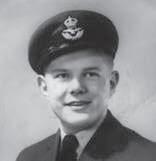

“It was a wonderful life. I loved the flying and the people I worked with, in the air and on the ground. No two weeks were ever the same.
“It could operate on short airfields and on different surfaces. One week we would be flying into places where the runway was covered in snow and the next going to airfields in desert areas.
“We couldn’t carry some of the larger military kit but we could change roles quickly, whether it was equipment or personnel or a mix of both.
“On humanitarian operations there was a very real feeling that if a Hercules was coming then something positive was happening.
“It was a little bit old and rickety and did throw up a few serviceability issues. Often you were working around those to find a way to get the task done. I remember landing in Cyprus on three engines in a storm – that was interesting flying.”
Julie now works training airline pilots and has been reunited with many ex-Hercules pilots in the classroom.
She added: “It’s a sad time, but I am grateful that I had all those years flying it. All of us were just trying to get the job done, and we did.”

dad’s logbook and was astonished to find that we had indeed flown many of the same airframes, decades apart.”

During his years with LXX Sqn Mike was deployed all over the world on combat and humanitarian missions.
But it was the capability of the ground-breaking, turbo-prop-powered US transporter that saved him and his crew from disaster during a sortie delivering kit to UK troops in the first Gulf War.
He explained: “We were taking a lot of stuff from Akrotiri into theatre and knew that we would be heavy.
“As we went down the runway to take off the captain pulled the stick... and nothing happened. He tried again and gave it everything and we struggled into the air as the end of the runway approached. We had planned for 25,000ft but as we climbed slowly we knew we would not hit that.
“We knew that we must be overweight so got the loadmaster to double check the load and the pallets. He came back and reported that were just under the maximum capacity.

“We never made our flight levels but we got there, burning way more
fuel than we expected. As we landed there was a horrific ‘pinging’ noise coming from the undercarriage.
“It was so loud you could hear it over the roar of the engines. As we hit the runway the aircraft listed heavily to one side. We thought we had burst a tyre but managed to stop safely. In fact, we had broken the suspension. That shouldn’t happen unless you land it sideways.
“We put the aircraft into quarantine and got the ground crew to check and double-check the weight again.
“The maximum load on a Hercules at the time was 35,000lb.

In the RAF we work in kilograms and someone had forgotten to do the conversion. We were carrying 34,000kg – more than twice as much.

“For any aircraft to carry more than double its maximum is incredible. Only a Hercules would look after you like that, should you do anything quite so stupid.”
During the conflict the tempo of operations for Mike and his crew was relentless. They flew more than 180 hrs in one month – most of it at night.
“Watching the fireworks in the sky as Scuds and patriot missiles from
the air defences filled the air was something I won’t forget,” Mike added.

During his career he deployed across the world, whether it was supporting the Red Arrows on international displays, training in America, delivering humanitarian aid or taking part in multi-national exercises.
He said: “You never knew where you’d be from one month to the next. One day you could be doing whacky low-level flying dropping stores and having fun and the next you would be asked to fly to the Caribbean to deliver aid.
“Just to see hungry kids smiling because you have delivered food supplies is something that stays with you.”




RAF-BACKED YOUTH charity the Jon Egging Trust has joined forces with the UK Space Agency as part of a £4.3 million programme to inspire the next generation of aerospace experts.
The Space to Learn project aims to improve access to the industry for disadvantaged students and the JET Group hopes to deliver 28,000 hours of space-related learning to more than 3,000 youngsters.
JET chief executive Dr Emma Egging said: “We are delighted to be a Space to Learn project partner, creating a bridge between the space industry and young people from disadvantaged backgrounds across the UK who are facing adversity.
“The UK space sector is experiencing a period of extraordinary growth, and we are committed to ensuring that the

opportunities generated as a result have a positive ripple effect across all of our society.”



AN AIR Force fitness instructor is bidding for a national beauty pageant title – to support a charity that funds research into premature birth.
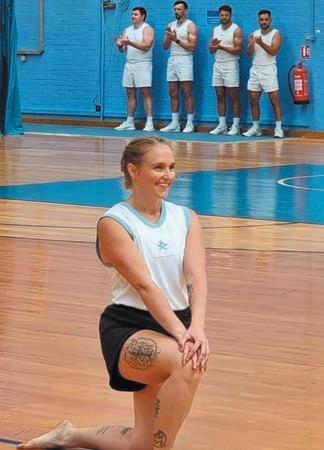
Cpl Emma Whitbread, 34, struggled to get help when her son was born six weeks early weighing just four lbs.
Emma, from Dorset, entered her first beauty pageant in 2013 – and won.
She currently holds the title of Ms Dorset Crown and Glory and will compete for the UK title this summer, hoping to raise £2,000 for Tommy’s Baby Charity and the official pageant charity Abbie’s Army, for brain tumour research in children.

She said: “You don’t have to be a ‘Barbie girl’ to take part.

“Judges are looking for something different and unique. For example, I’ve got tattoos which would not have been allowed in past pageants.”
The RAF Henlow-based Physical Training Instructor, who joined the Air Force two years ago after serving with the Army, added: “My son was born in 2007 and spent some time in hospital before I could take him home.
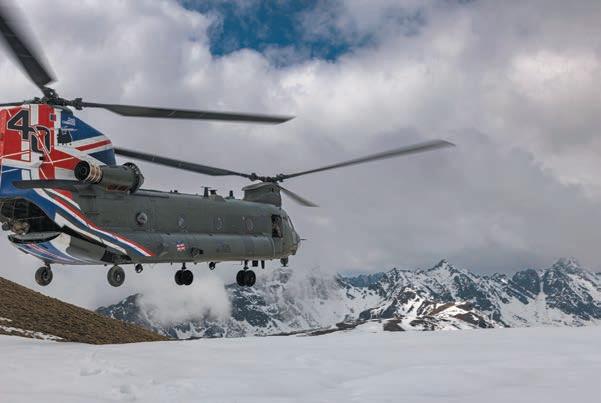
“I didn’t have any support when I had him and if I’d had something like Tommy’s to help, my struggles would have been much more manageable.”

She’ll also be taking part in the London Landmark Skyscraper Challenge later this year – running up the 42 floors of Leadenhall Building,


known as the ‘Cheesegrater’ in the City of London, then abseiling down it, for the Tommy’s charity.
She said: “I have a strong passion for charity, which is one of the main reasons I started taking part in pageants, as well as to help me gain more confidence.
“I’ve come a long way since my first pageant a decade ago – the first time I took part and got up on stage I couldn’t speak.
“I had a break from entering pageants in 2016 to concentrate on my career. I’ve decided to take part in another one now because I believe it is a great platform to allow me to help raise vital funds for charity.”
She added: “Pageants are about much more than just being a pretty face, they have become so diverse over the past 10 years.”

Emma has won 19 titles, including Miss Charity 2013 held at Disneyland, Paris, and Miss Charity 2016. She came second runner-up and won the most beautiful face award at the Ms United Kingdom international finals in Miami, also in 2016.
She said: “I find taking part in the competitions empowering. I also love meeting other competitors and hearing their stories.”
She added: “I’ve spent the past 10 years in the military and I have had great support from the Army and the RAF on my journey in the pageant world.”
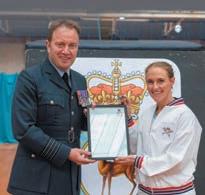
l To support Emma go to: gofundme. com/f/tommys-and-abbys-army




GAY RIGHTS campaigners are demanding individual pay-outs of £100,000 to personnel forced out of the military before the ban on homosexuality was lifted.
The calls for compensation are among a range of measures to help an estimated 5,000 people who suffered financial hardship and severe mental health problems as a result of the hard-line ruling, scrapped in 2000.
A report released by the Fighting with Pride group and Northumbria University lays bare the treatment of gay members of the military.
More than 80 per cent were subjected to intrusive investigations, often including intimate medical examinations, while more than 70 per cent say they were treated like criminals.
All those forced out of the Services were stripped of their medals and pensions, leaving many destitute and struggling to find work.
The first academic study of its kind, the survey involved interviews with more than 100 veterans dismissed from the Armed Forces because of their sexuality.

Many say they are still living in poverty, have been made homeless and suffer from poor mental and physical health.
Anne Myles, who served in the RAF for seven years, took part in the survey. She told researchers: “It took away my career, it took away my pension, it took away my future.

“It utterly destroyed it and took away a job I know I was good
at… it just took away my home, my livelihood, my future, career, pension. It doesn’t really get much worse than that, does it?”
Fighting with Pride is also calling for compensation for the loss of pensions, a formal apology from Prime Minister Rishi Sunak and the erasing of criminal records of those prosecuted by the MOD.
FWP founder and ex-RAF officer Caroline Paige said: “The visceral hurt caused by the illegal
and cruel ban is heartbreaking.
“Our report has been two years in the making and shows that veterans continue to live with the devastating impact to this day, over 25 years later. It’s wholly unacceptable – warm words aren’t enough. Veterans have been left without a home or job, many robbed of family by being ‘outed’.
“In the worst cases, those found to be gay were dismissed after harrowing investigations by the
 CAROLINE PAIGE
CAROLINE PAIGE
Military Police, some were even subjected to forced ‘treatments’ in military hospitals.
“It’s essential the Independent Review is published without delay. It offers a unique opportunity to make right, in line with the Armed Forces Covenant.
“Proper compensation is a vital part of the remedy for lives and livelihoods lost when all people were doing was serving their country.”

A TYPHOON teamed up with two Royal Navy warships by satellite to intercept an incoming missile using a new air defence system on the MOD’s Hebrides Range.
The joint mission by an RAF jet, HMS Defender and HMS Kent was part of Nato’s most important annual test of its ballistic missile defences.
The Typhoon and F-35 Lightning aircraft trained with 4,000 Service personnel from 13 nations to hone their skills during Exercise Formidable Shield.
Strategic Command Director of Capability, Maj Gen Robin Anderton-Brown, said: “The exercise was a clear demonstration of the coherence of the alliance, and the importance of the need to share and fuse data and information
between nations to defeat highspeed missile threats.”
More than 20 ships, 35 aircraft and eight ground units, including radar platforms and the US M142 High Mobility Artillery Rocket System known as HIMARS, recently deployed in Ukraine, took part in the latest biennial exercise in Scotland.
The technology used by the Typhoon was first developed in a joint programme with France and Italy and is now being upgraded at industrial sites across the UK.
Nato Deputy Commander Rear Admiral James Morley said: “This is the premier integrated live fire rehearsal in the European theatre and highlights our proficiency in seamlessly integrating Allied and partner maritime and air forces into combined operations.”
FLYING BOAT crews who hunted Nazi U-boats to protect Britain’s vital wartime supply lines were remembered at a former RAF base in Wales.
Top brass gathered at the Pembroke Dock Heritage Centre in the chapel of the former station to remember the Battle of the Atlantic.
Air Officer Wales Air Cdre Adrian Williams said: “While Pembroke Dock was the RAF’s biggest seaplane base, Pembrokeshire was key to Coastal Command operations, with eight stations here.
“We should never forget the bravery and resilience of the men and women of the RAF in winning this struggle.”

The event was marked by a flypast by a 201 Sqn Poseidon that today guards Britain’s sea lanes, just as the flying boats once did.
The Centre houses the remains of a Short Sunderland aircraft which sank during the war and was recovered from the harbour.
The Battle of the Atlantic was the longest campaign of the World War II, running from 1939 to the defeat of Nazi Germany in 1945.
Although a Naval campaign, RAF Coastal Command played a significant role in defending convoys and by mid-May 1943 had helped turn the tide against the U-boat blockade, which is why the 80th anniversary is marked at that time.
VETERANS MINISTER Johnny Mercer presented medals to injured competitors at the recent Veterans Games in Tel Aviv, Israel.
The event was launched to support Forces vets who suffered physical and mental health problems after serving.

Simon Mander
BRITISH AND American ground crews teamed up to get to grips with a Rivet Joint reconnaissance aircraft during an in-depth inspection at Offutt Air Force Base in Nebraska.
With Old Glory and the Union Jack hanging above the repair dock, more than 20 RAF engineers and US 55th Maintenance Group (MXG) personnel joined forces to ensure the ISTAR platform is mission ready.
The work marked an expansion of the co-crewing agreement between 51 Sqn and 55th Wing aircrew – that started when Waddington received their first RJ in 2013 – to include maintenance operations.

“As a smaller operator than the US Air Force, we don’t get the quantity of maintenance work that they do,” said 51 Sqn’s Sgt Chris Winn.
“In the three or four weeks working with the US team here we can get six or eight months’ worth of home experience, so it’s very valuable.”
“The Air Force and Royal Air Force co-manning flying program
is a benchmark for international relationships,” said 55th MXG deputy commander Lt Col Bryan Wersching.
“By adding co-manning for maintenance, or engineers as the
RAF calls them, it enhances this cooperation.”

The 55th MXG has already sent personnel to Waddington to begin 120-day rotations as part of the expanded agreement.
MUSICIANS WITH the RAF Central Band take a breather as the new King’s Colour is paraded ahead of the Changing of the Guard, as RAF Gunners take over the role from the Irish Guards.
The occasion marks 80 years since the RAF Regiment’s first King’s Guard mount, which was conducted in front of King George VI in 1943, against the Coldstream Guards.


Simon Mander
A CEREMONY has been held for an RAF pilot 83 years after he was killed in action over the beaches of Northern France.


Pilot Officer Robert Alan West, 20, from Clapham, London, was shot down on June 1, 1940 while flying a Hurricane on a patrol off Dunkirk.

At the time his unidentified remains were laid to rest as an unknown airman.
But the discovery of aircraft parts and personal effects in Zuydcoote led Air Historical Branch and RAF Museum investigators to confirm the grave as that of PO West.
The MOD Joint Casualty and Compassionate Centre’s Tracey Bowers said: “This has been a case that combines both burial and rededication of a headstone.
“The assistance given by the Air Historical Branch (AHB) was vital to help solve this.
“We have now been able to hold a ceremony to rededicate the final resting place of this brave young pilot in the presence of his family.”
The service at Dunkirk Town Cemetery was attended by 10 family members, including PO West’s niece Shelia Davenport.
She said: “The family knew little about Uncle Bob until we were contacted; we now know so much about him and his life. We are grateful for the closure this ceremony has given.”
The AHB examined 74

Hurricane casualty files from the 1940-42 period and managed to rule all but nine out.
PO West’s documents revealed that he took off from RAF Hawkinge with seven aircraft of No. 245 Sqn as part of a formation with 43 and 145 Sqns. He was in the rear of the
AIRCREW TRAINING has been given a £125 million boost to prepare RAF weapon system officers and RN observers to operate on Poseidon, Rivet Joint, Wildcat and Merlin aircraft.
Under the deal civilian instructors and military staff from 750 Naval Air Sqn at RNAS Culdrose in Cornwall will continue instructing mission aircrew prior to the introduction of new systems.
The contract runs until June 2026, when new ISTAR and Rear Crew Training Systems replace it. The investment will buy a new

A SOUTH African Royal Flying Corps pilot shot down in World War I has been remembered after investigators identified an unmarked headstone of a Commonwealth war grave.
RFC 2nd Lt William Wallace Hutton, from Cape Town, was 24 when he was killed in October 1917 on a bombing raid to Saint Denjis Westrem in Belgium.

The Admiralty notified the War Office that, according to German sources, Hutton had been killed in the crash, and the two other crew members taken prisoner.
More than a century after his death RAF personnel took part in a ceremony at Commonwealth War Graves Commission Larch Wood (Railway Cutting) Cemetery.
Lossiemouth Chaplain Rev (Flt Lt) Robert Hadfield, who led the service, said: “It’s an enormous privilege for me to have played a part in this rededication ceremony for William, whose name is at last etched into stone as an ongoing testament to the ultimate sacrifice he made.”

formation when a German Me 215 attacked them. He was not seen to crash but was recorded as missing.
DNA testing confirmed the additional remains recovered belonged to PO West.
The service was led by Lossiemouth Chaplain Rev (Flt Lt) Robert Hadfield.
Airborne Mission Trainer and upgrade Avenger aircraft with an electronically scanned array radar, an electro-optical camera, and reconfigure cabin and mission consoles, extending its Service life 10 years from 2023 to 2033.
Air Vice-Admiral Rick Thompson said: “This contract will ensure the continuation of the critical training qualified mission aircrew need for frontline duties.”
The contract has been awarded to Ascent Flight Training, a joint venture between Lockheed Martin UK and Babcock International.
Speaking after the ceremony he said: “The courage of those like PO Robert West, whose actions in support of the evacuation of Dunkirk allowed hundreds of thousands of lives to be saved, should forever be remembered.
“I am humbled to have been involved in this ceremony.”
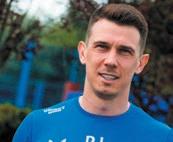
FORCES CHARITIES have netted a £15,000 funding lift thanks to Scottish Premiership side Rangers FC.
Services welfare groups SSAFA, Poppyscotland and Combat Stress will share the payout, which takes the total funding support provided by the club to more than £240,000.



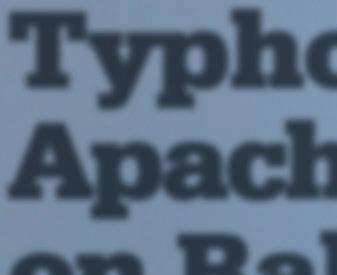


A MEDIC responsible for developing life support systems in Typhoons and other military aircraft has received a top accolade in America.
TYPHOONS AND Apache gunships blasted targets in the sea with advanced missiles and heavy machine guns off the coast of Estonia.
The 140 Expeditionary Air Wing jets, armed with Paveway IV laser guided bombs and 27mm armour piercing rounds, joined Army Air Corps Aviation Taskforce aircraft with Hellfire missiles, CRV7 rockets and 30mm rounds on the mission on the final days of Exercise Spring Tempest.
Commanding Officer Wg Cdr Scott MacColl said the joint training with Estonia and France

demonstrates the Allies’ ability to deliver precision strikes deep in enemy battlespace.


He said: “The flexibility to operate across differing environments demonstrates our contribution to collective defence and regional security.
“The scale of this exercise further develops Alliance cohesion and cross-nation understanding.
The mission was supported by a Forward Air Controller operating from a Royal Navy Wildcat while helicopters worked in tandem with ground-based personnel to refuel and rearm before returning

to the mission area.
The Royal Navy’s amphibious assault ship HMS Albion (below), carrying around 550 sailors and Royal Marines, joined the RAF and Army for further training off the coast of Paldiski.
Typhoons, Apache and Wildcat helicopters flew in formation overhead, as the Royal Marines transported soldiers from The Queen’s Royal Hussars and their 62-tonne main
battle tanks from the shore into HMS Albion’s dock.
HMS Albion’s Captain Marcus Hember said: “The Royal Navy can move Army heavy equipment on and off a shoreline whilst being safely covered from the air by the RAF and Army Air Corps.”
Wg Cdr Nicholas Green from the RAF Centre of Aviation Medicine was presented with the Louis H. Bauer Founders Award at the 2023 Annual Scientific Meeting of the Aerospace Medical Association in New Orleans.

move
The drill follows Exercise Spring Storm, with an estimated 1,500 British soldiers training alongside more than 10,000 personnel from 11 Nato countries.

FOREIGN SECRETARY James
Cleverly sat in the hot seat of an RAF Typhoon on the frontline of Nato’s eastern flank on his first trip to Estonia.

The Minister was escorted to the hangars at Amari airbase to see a training scramble as the Air Force reacts to potential threats in the Baltic region. He was briefed on recent Typhoon drills with UK land and maritime forces based in Estonia.
1 (F) Sqn’s Wg Cdr John Cockroft said: “The Sqn has smoothly transitioned into the role and is keen to work closely with Nato allies over the next two months.
“We were able to demonstrate the rapidity at which our personnel can react to any potential threat.”
Ahead of his visit Mr Cleverly said: “In Estonia, across land, sea and air, British personnel are on

the frontline protecting Europe’s security and deterring Russia’s cruel and catastrophic aggression.”
The RAF will remain in Estonia until August when 140 EAW will hand over to the Spanish Air Force.

The prize recognises his 30year career providing expert advice on aerospace medicine challenges, including the effects of sustained acceleration and hypobaria on aircraft support systems.
He joined the RAF in 1990 and specialised in aerospace medicine at the former RAF Institute of Aviation Medicine at Farnborough.
He has served the Aerospace Medical Association as a memberat-large 2017-2019, supported the scientific program committee for many years and was chair from 2019-2020.
At the same event former Centre Commandant Air Cdre David McLoughlin and current exchange officer Lt Col Winton ‘Cuffs’ Laslie were both awarded Fellowship of the Association awards.
WYCOMBE FITNESS instructor

Lucy Gunson hit the gym to clock up 4,000 burpees in 24 hours to raise funds for the Samaritans charity group.
Speaking after completing the challenge, she said: “When the last set came, my hips and knees were shot but people cheering and the thought of the good work that the charity does got me to the finish line.”











AS HER MAJESTY the late Queen once famously said in a different context: “Recollections may vary,” and that is certainly the case with historian Paul Beaver’s biography of Eric ‘Winkle’ Brown.

And that is not the only controversy likely to be sparked by this 500-plus page account which glories in the subheading The Extraordinary Life of Britain’s Greatest Pilot Quite a claim that.
Greater than Edward ‘Mick’ Mannock VC, the RFC’s top World War I ace? Greater than Wg Cdr Johnnie Johnson, the RAF’s highest-scoring World War II pilot? Greater than Czech Battle of Britain ‘lone wolf’ legend Josef Frantisek?
We will let RAF News readers decide.
But back to the book, which is the result of Beaver’s unprecedented access to Brown’s archives to produce the first and only authorised biography, on the condition that it would not be published until after Brown died.
And among the treasure trove of 20 chests
WE HAVE copies of Winkle: The Extraordinary Life of Britain’s Greatest Pilot by Paul Beaver to give away.

To be in with a chance of winning one, just answer the following question:
What was the name of the aircraft carrier Winkle was on when it was torpedoed and sunk by a U-boat?

Email your entry, marked Greatest Pilot competition, to: tracey.allen@rafnews.co.uk or post it to: RAF News, Room 68, Lancaster Building, HQ Air Command, High Wycombe, HP14 4UE, to arrive by July 7.
of documents, flight records and photo albums the author received in 2016 were details of incidents he found ‘shocking’.
Chief among them (spoiler alert) was the discovery that Brown was given up by his mother as a baby to the Salvation Army in London and sent by train to Edinburgh, where he was adopted.
“Despite this incredible start to life, this is
a story Eric took to the grave,” says Beaver. “Not even his late wife Lynn or his only son Glenn were aware of it. He spent his whole life as a proud Scot, even though he was born in England. He even went as far as to keep a forged birth certificate to hide the true story of his origins.
“However, as we shall see, this was far from the only major discrepancy in Eric’s





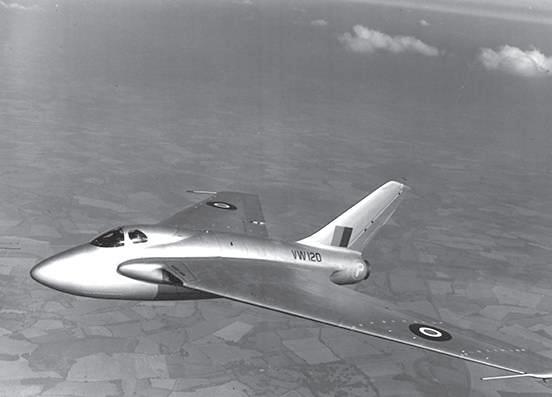

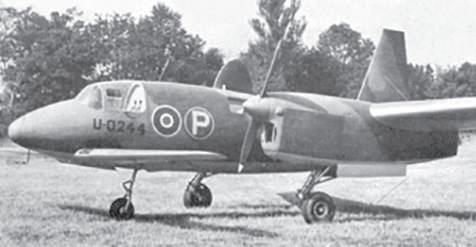


‘approved’ version of his life.”
And it is this tension between the tales ‘Winkle’ regaled his friends with, Beaver among them, and what the author as an experienced historian and former war correspondent can verify that gives the book its intrigue and momentum.
Some of its subject’s exploits – such as narrowly escaping death on the torpedoed aircraft carrier HMS Audacity and logging more than 6,000 flying hours in 487 different aircraft as Chief Naval Test Pilot and on Fleet Air Arm service, a certified Guinness world record – can be substantiated.
Others – such as experiencing combat as a teenager in the Spanish Civil War or being visited in hospital by Winston Churchill after flying a Martlet


fighter upside down and crashing into the Firth of Forth – can not.
Certainly, his life contained more drama than most – from witnessing the liberation of Belsen concentration camp to becoming friends with Prince Phillip, from hosting Soviet cosmonaut Yuri Gagarin to playing drums with the Glenn Miller band.
In later life he even enjoyed a bit
of media stardom when he was selected as the 3,000th castaway on Desert Island Discs, where presenter Kirsty Young described him as ‘a real-life hero’ who made James Bond seem like a bit of a slacker’.
And it is to Beaver’s credit that despite a personal friendship lasting 40 years with his subject, he avoids hagiography and rigorously seeks the facts behind the myths, even admitting that Winkle’s arrogance, possibly due to a fear of his humble origins being discovered, sometimes made him enemies.

This is an incredible life story told with great panache and integrity by Beaver, who in the end still regards his friend as a national treasure and an aviator with a unique, unparalleled and unrepeatable story.
But Britain’s Greatest Pilot?
l Winkle: The Extraordinary Life of Britain’s Greatest Pilot, by Paul Beaver, published by Penguin,


 By Malcolm Triggs
By Malcolm Triggs

THE FIRST book in an unprecedented history of the Battle of Britain by renowned author and historian Dilip Sarkar has just been published.
Battle of Britain, The Gathering Storm is the first volume of a planned eight-part work that looks set to top one million words as it tells the story of the 1940s aerial conflict from every possible angle.
The author has described the work as ‘an unprecedented narrative history of the Battle of Britain from as many perspectives as possible’ and said seeing volume one in print made him proud to see the ‘vision becoming a reality.’

The series is published in association with the Battle of Britain Memorial Trust, which

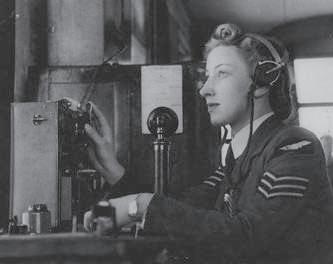



runs the National Memorial to the Few at Capel-le-Ferne in Kent and is committed to telling the story of the Battle that changed history while honouring The Few who fought it.
“Part of the motivation behind this book was to create a comprehensive work on the Battle of Britain that would reinforce the Trust’s position as a go-to place for information on the events of the summer and early autumn of 1940,” said Sarkar.
“This book will be the culmination of a lifetime of research on the Battle of Britain, as well as including new and original material and taking a fresh look at much of the accepted narrative that no longer stands up to scrutiny.
“While the aim is that this will become a valuable work of reference, it is above all a lively and fascinating look at possibly the most important battle fought
by this country in the whole of the 20th century. The stories I tell are fascinating, human tales of real people living out real lives in extraordinary times.”
Sarkar takes a careful look at the background to the conflict, from the development of air power and political events at home through to the German invasion of Norway and the fall of France.

“I’ve never worked so hard on anything before,” he said. “As the work has progressed and evolved, so the breadth of the material and the number of threads that need to be brought together have become apparent.
“It’s a 360 degree look at the Battle of Britain and I’m increasingly sure that the eight volumes will total a million words.”
l Battle of Britain
The Gathering Storm is available via battleofbritainmemorial.org and from all good book shops.



WING COMMANDER John
Davis, who has died aged 89, was an RAF flying instructor and test pilot who became a leading authority on safety at air shows.
He joined the Service in September 1952 and trained as a pilot. He converted to the Canberra bomber and served at Gütersloh in Germany with 103 and 59 Squadrons. After attending the Central Flying School (CFS), he instructed cadet pilots at the RAF College Cranwell, before returning to CFS to train future flying instructors.

In 1963 he attended No. 22 Course at the Empire Test Pilots’ School, before joining the Weapons Flight at Farnborough. He flew a wide variety of aircraft testing the carriage and release parameters of air delivered weapons and their effectiveness.
Davis’s test flying career continued for a number of years. In 1971 he was appointed the Deputy Superintendent of Flying at the Aeroplane & Armaments Experimental Establishment (A&AEE) at Boscombe Down, coordinating the test flying programme of aircraft ranging from light aircraft and helicopters to heavy transporters and a wide range of high-performance fighters and ground attack aircraft. He took the opportunity to fly and test most of them.
In December 1976 he joined the Defence Intelligence Staff in MOD, specialising in technical intelligence, in particular making assessments of the performance of foreign aircraft. Immediately after the end of the war in the Falkland Islands in 1982, he was on one of the first aircraft to land at Port Stanley after the Argentinian surrender, when it was his task to make an initial assessment of the military equipment, weapons and aircraft left on the island.
In November 1984 he headed for Budapest as the air attaché for Hungary and Romania. During his tours of Hungary he was driven by his Service driver, but for similar ventures to Romania it was his wife who drove and assisted him in his intelligence gathering.
On his return to the UK in May 1987, he spent a year in MOD dealing with the policy of flying in support of the Defence Procurement Organisation before retiring in September 1988. He had flown for almost 4,000 hours, piloting 64 different types of aircraft.
Davis immediately joined the Civil Aviation Authority (CAA)
and started a new career advising on air show flying safety.
His air show experience began soon after his arrival at Farnborough in 1964, when he was tasked to prepare a major air display for Queen Elizabeth II. He created a framework which he would go on to improve when he left the RAF and joined the CAA in 1988. At that time, no spectator had been killed at a flying display in Britain since 1952, and Davis was determined to maintain that record, fully aware that speeds had increased and crowds wanted lower, faster and more thrills.
For the next 20 years, Davis was involved in, and often led, the creation of codes of practice in Britain and in Europe. When the Ramstein air display disaster happened on August 28, 1988, resulting in the death of 67 spectators and three pilots, Davis was able to reassure the CAA that British governance was robust and such a disaster, caused by the Italian team flying towards the crowd, could not happen in UK.
In 2009, Davis played a key role in the formation of trade body the British Air Display Association (BADA), to coalesce the learning and create a voice for an industry which sees five million people watch flying displays.
Davis took his expertise and experience to Europe, masterminding the Malta Air Display in September 1993 with its complications of air space and geography, working harmoniously with at least three Maltese government departments.
His favourite displays included those at RAF Waddington, at the former RAF Abingdon and the Chalke Valley History Festival –some large, the other small and compact. He particularly enjoyed coordinating the flying sequences with music at the Music in the Air events at Middle Wallop, with picnickers attending the spectacular late afternoon show.
After the reactions to the Shoreham disaster in 2015, and the blame culture that followed, Davis decided that almost 30 years was probably enough and Covid restrictions put paid to his time with BADA and air displays. One aviation journalist commented: “No man has had a greater influence on the governance and safe conduct of British air displays.”
Davis was a keen philatelist and for many years assisted in the production of Service-associated First Day Covers to raise funds for the RAF Benevolent Fund.



RE: YOUR feature on John Nichol’s new book Eject! Eject! (RAF News No. 1560), the first British pilot to eject was Jo Lancaster in 1949.


Most Meteor squadrons then became equipped with the ejection seat with the Mk8 aircraft. I was on 257 Sqn at Horsham St Faith, as the squadrons doubled in a/c size we moved to RAF Wattisham.
Later in my service I was in charge of the seat service bays in the 1960s at RAF Akrotiri and later on the Tornado seats at RAF Cottesmore in the late 1970s, leaving in 1985.
R G Copping (aged 92, Service number: 583982)
AS AN 88-year-old retired Wg Cdr I really enjoy being kept up to date with the RAF through your excellent paper.

However, your headline puns really grate and are reminiscent of The Sun at its worst.

Straightforward headlines are all you need to catch the eye. Please stop this schoolboy activity and treat your readers as intelligent adults.
Alan Robertson Wg Cdr (Ret’d) Via email










HAVING HAD the privilege of training as a RAF dental hygienist 45 year ago, and spending 20 years in uniform, I believe it is important that the history of this training is not forgotten.
This year, as a profession, we celebrate 80 years – we should remind everyone that the foresight of the RAF led to the introduction of dental hygienists in the UK.
The first course started in May 1943 and was completed in September that year
Sadly, we no longer have uniformed dental hygienists. As only the RAF trained dental hygienists, as they left they went to work in civilian dental surgeries. Individuals would train and leave relatively quickly as civilian employment was buoyant.
The RAF trained a few civilians in the early days (early Fifties) and from 1976 to 1997, civilian dental hygienistsalso trained at RAF Halton – the School of Dental Hygiene relocated there from Sidmouth in 1945. The last dental hygienist in RAF uniform left around 2014.

The first dental hygienist training course was instigated to prevent the high levels of ‘trench mouth’ – a destructive oral condition that led to many flying hours being lost by aircrew and their supporting ground crew, especially in Bomber Command.
Sir William Kelsey Fry was both a doctor and a dentist and saw active service in World War I, gaining


the military cross in 1916. He witnessed at first hand the debilitating effect oral disease had on WWI military personnel. After the war he gained prominence in the treatment of facial injuries and the prevention of dental disease. He visited the United States many times and saw at first hand the important role dental hygienists had in improving both the oral health and wellbeing of individuals.
Owing to the high levels of dental disease, and lack of dentists, the RAF looked to Kelsey Fry for a solution, which led to the introduction of dental hygienists in the RAF and the UK.
When the NHS formed in 1948, it looked at the concept of the dental hygienist and quickly realised the important role the hygienist could play in the prevention of dental disease. The first civilian training course was instigated in 1949, based on the RAF training model.
In 1949 the British Dental Hygienists Association (BDHA) was formed, and the role the RAF played in the development of the profession in the UK is recognised by the RAF eagle being incorporated into its badge.


In 2006 the BDHA became the British Society of Dental Hygiene and Therapy.

Michael Wheeler
Via email
Free hangar tours, exclusive monthly prize draws, and monthly newsletters


SUSPECT VEHICLE heading east. Korean, 280 PS, flash wheels, lots of gob… Hyundai’s new i30N has all the right credentials for a TV car chase. It conjures up images of undercover cops in hoodies, or ‘bad boy’ criminals on the run, but in real life it’s a car that petrolheads will love. This is Hyundai’s first proper

performance car and it’s been designed by former BMW M boss, Albert Biermann. No wonder it feels like an M Series car.

It combines the best bits of an analogue GTi with the latest tech to give you a rich driving experience that leaves you grinning from ear to ear. It has an absolutely brilliant manual gearbox and a



real handbrake, while the perfect chassis/drive settings can be selected at the push of a button. An illuminated rev counter that automatically shifts the redline position as the engine warms up is another touch that really wows.
The N? That stands for Namyang, the district in South Korea where the N brand was born. Nurburgring is another important word for N series cars, as it’s where they are honed and tested. Finally, look at the ‘N’ logo from an angle and you realise that it represents a classic chicane. All things that point to this car’s racing design.
Anyone who’s driven a regular i30 will realise that the i30N follows the usual layout. Our car came with the lightweight sports seats, that looked superb. They grip you securely around the midriff and shoulders through the bends too, so it’s not just for show. The driving position is terrific, with wellpositioned pedals and plenty of height and reach adjustment for the steering wheel. It’s easy to find the perfect driving position and you sit low.
The interior isn’t as flashy and sci-fi as some rivals but I like that simplicity. The buttons and switches are all easy to find
and the touchscreen infotainment system sits high on the dashboard. It’s much simpler to use than the systems found in many rivals, with well-designed menus. Sat-nav, Apple CarPlay and Android Auto smartphone mirroring are all standard, but my favourite gadget is the performance display. This shows you the engine’s power and torque output, plus a g-force meter that tells you how many G you’re pulling through the bends.
The 2.0-litre turbocharged fourcylinder petrol engine develops 280ps, which is pretty impressive in a car of this size, but it’s the torque that really gets you. You can hear the car whining as it powers through the gears and feel it scrabbling to heap the power down. There’s also an overboost function that allows you to increase performance for more overtaking thrust. Bonkers and brilliant.
It feels impressive but, when you really crunch the numbers, it feels slightly faster than it is. 0-62mph in 5.9 seconds for the manual and a 155mph top speed. It won’t match the stonking 316bhp delivered by Honda’s epic Civic Type R for example, but it loves to be revved

Pros
l Precise handling
l Sounds great
l Brilliant gearbox
l Well-equipped
Cons

l Not the fastest hot-hatch
l Slightly dated interior
Verdict
The i30N will leave you grinning after every drive and good value for money at around £35k.

and doesn’t disappoint in the thrill department.
It’s a car that loves to be driven hard through the bends, delivering impressive stability. Whack it down into second as you enter a damp corner and you’ll feel the rear twitching playfully. It’s a nice little chassis. Then there’s the sound. The exhaust crackles away when you lift off and a down-shift will provide aggressive revving, like a proper race car. Addictive!


Daniel Abrahams
THE FINAL whistle has blown on the sporting and Service career of one of RAF Rugby Union’s top officials, WO Paul Owens.
Over more than 21 years he has officiated across the globe, from station to representative level, including this year’s auspicious Army versus Navy Veterans clash at Rosslyn Park FC before the famous senior team’s Twickenham fixture.
Owens (pictured) also managed to squeeze in two deployments to the Falkland Islands, as well as serving on Ops Telic, Herrick and Ellamy, when not at the sharp end of his beloved sport.
RAF Rugby Union Referees Society (RAFRURS) chairman Wg Cdr Fraser Gray
ANGLING

said: “Paul has, within the RAF and wider civilian rugby community, been a stalwart of the game – both playing and with a whistle – for more years than he might wish to think about.
“I want to thank him for his very many trips out – in all weathers, at all hours, and in many far-flung locations – to ensure that Service rugby teams have a suitably-qualified official.
“As the RAFRURS Appointer in particular, his record of finding referees has been unparalleled, along with his determination to leave the post in a better position than

he found it in. He has been an absolute star.”
Owens, who has five world records for the longest games of rugby –four 15s games and one 10s game, while supporting the Scotty’s Little Soldiers charity in 2013 – began life as a Service referee in 2002 at RAF

He said: “I had just finished my officiating courses and took charge of a match at the station, although I can remember the game, I cannot remember how many matches I have overseen in total.
“I officiated at

least five Service games and 10 or so Sunday youth fixtures per season until about 2012, when I stopped playing civilian rugby and began covering more Saturday refereeing. Since then I have averaged 40 games a season, Service and civilian, for the last eight or so years.”
Looking back on his illustrious career, Owens pinpointed the RAFRURS’ involvement in getting Inter-Station and Inter-Service rugby union up and running again post-Covid as a high point.
He said: “I am very proud of how we helped get things going again. It’s great to look at the situation now and think that a little bit of that success is down to some of my work.” l Follow RAFRURS on Twitter @ RAFRURS.
IT WAS a boat and shore one-two for FS
Scott Rennie and novice angler Pte Mick Parkinson at this year’s Sea Angling Festival in Holyhead, North Wales.
The pairing triumphed at the annual two-day event which introduces newcomers to the sport, with this year’s festival attracting a field of 43 anglers, 15 novices and 28 experienced, and featuring an extra coaching day at RAF Valley.
For the training day coaches
Mr Wayne Hand and Cpl Steve Rathbone ran casting
practice during the morning, while the afternoon comprised of boat and shore kit demonstrations from WO Darren Rose (Scotland Boat international) and Chf Tech Mike Treharne (Current UKAF Shore Champion) and detailed rig tying lessons.
A six-hour day of shore angling action kicked off the event, with all catches caught and measured and returned to the water.
Every novice recorded catches, with a total of 310 fish hooked –while the pairings of Rennie

and Parkinson, and Rathbone and FS Noel Dilnot triumphed in their particular zones.
Rennie and Parkinson continued their dominance throughout the boat day, which saw anglers travel to two ports (Holyhead and Amlwch) fishing from five boats for six hours of drift angling.
Association spokesman Chf Tech Darren Paul said: “Unlike shore fishing, in which fish are measured to reflect a score, boat fishing sees all fish species issued with a generic point score, with bonuses applied if

anglers catch two of a species.
“Throughout the day mentors instructed and encouraged novices to think about rig or bait selection, while keeping an eye on what the opposition were doing and maintaining a competitive catch rate.”
The results saw the Top Boat Novice go to Dilnot with Parkinson picking up the best overall novice title, with Dilnot second and WO Ian Stocker third.
l Follow RAF Sea Angling on Facebook.
CORPORAL SARAH Toms
recorded three victories from four Royal British Legion Criterium Races at the Milton Keynes Bowl after a month of race action.

Toms said: “A great series of midweek racing preparing the team for the season, some hard-fought battles to the line. I am super happy with my overall finishes.”
The series of four races, organised by WO Miles Ogden on behalf of RAFCA but also open to civilian riders, consisted of several laps completed over an allotted time, for the women and category four male riders, 45 minutes; category 2/3 men over an hour, before a sprint finish.
The first two races were held in severe rain and hailstones, with Toms taking first place while Sgt Philip Bennet came home first as category 4 rider, and Cpl Ian Lee first as category 2/3.
Bennet took first again in category 4 in the second series, while Sqn Ldr Lou Pearson was the first female rider home and AS1 Rich Summerbell first cat 2/3.
Cpl Toms was first again in the third series, which was held in bright sunshine, with Cpl William Duncan
MOTORSPORT
the first Cat 4 and Flt Lt Edward Calow first Cat 2 rider home.
Toms ran out the winner again in the fourth series, with civilian rider Sam Marriot the first Cat 4 and Calow again the first 2/3 Cat rider home.
RAFCA Road Cycling secretary Sgt Nick Munro said: “ The RBL events had something for everyone. Attendance was good throughout with RAF riders competing against each other as well as local cyclists, with some aggressive but fun racing. RAF riders came away with some solid race miles in their legs and top results to go with them.”
l Follow the RAF Road Cycling Association on Instagram @ rafcycling.
THE RECENT SISTERON RAF gliding expedition saw a superb return of four silver height gain medals.
the following day’s debrief, when he was advised to download his onboard data.
A HEALTHY return of top-five finishes was the association’s reward from the Armed Forces Race Challenge’s (AFRC) opening round at Silverstone.
After two races over an intense day’s action Fg Off Chris Pawley took top spot in the Class C – max 180bhp per tonne class, with Cpl Harry Townsend first in the 116 Military Class, with Flt Lt Jack Liewsky runner-up in the same event.
The RAF Motor Racing team had 13 drivers competing, six of whom were novices in their first season.
The AFRC event sees drivers from all three Services compete, including veterans and guests, across four classes: A – max 300bhp per ton, B – max 240bhp, C – max

180bhp and D – max 135bhp. Sqn Ldr Simon Frowen was third in class A, with AS1(T) Luke Arpino fourth in C.

The Service’s drivers will compete in the next round at Croft Circuit, Darlington.
l Follow Armed Forces Racing Challenge on Facebook.
The 12 days of Exercise Parcours Combattants, organised by Sgt Ross Craney (OIC) and Sqn Ldr Mark Williams of the RAF Gliding and Soaring Association, was based out of the airfield in the French Alps and saw 20 gliders achieve flying hours over 88 flights in total.

Speaking of his silver medal, which saw Flt Lt Rob Sadler top out at 9,000 feet in two hours and 20 minutes, he said: “It was challenging. I did my badge in the highest-level glider I had ever flown in, it was a bit of a hot rod [Discus glider] and the weather was perfect for that type of goal to be achieved.
“I was lucky enough to hit a thermal straight out of the air terminal, climbing from 5,000 to 9,000 feet.


“My flight was part of a local soaring trip, and I was allowed to climb as high as I could, maintaining all aspects such as oxygen and so on while I did.”
Sadler didn’t know he had achieved his medal until

He added: “During the flight I was calm, but the next day I had a ridiculous smile on my face all day. It was a surprise when I found out, but what a pleasant surprise. The images taken of the Exped are fabulous, but it was much better than they have captured.
“It was simply amazing.”
Sadler then flew ‘On to the Parcour’ as the flight was called, reaching 500km in five hours alongside a local instructor. He said: “We could have stayed up longer, because the conditions were suited to it, but physically my legs were shot when we landed.”
in
An association spokesman added: “The overall aim of the Exped was for attendants to achieve distance sorties and although the weather did not allow continual flights of this sort, it did see gliders reach height gains and other training achievements for every glider from junior level to experienced, resulting in the excellent return of medals.”
l Follow the RAFGSA on Instagram @rafgliding.
Clouds have a silver lining as distance sorties are ruled out but gliders soar to new heights






Daniel Abrahams
THE SERVICE’S horse riders are celebrating six wins in the UK Armed Forces Dressage Championships, with a hat-trick for AS1 Holly Croall at Weston Lawns, Bedfordshire.


A larger entry than usual saw 14 RAF and 12 Army competitors taking part in 36 classes.
Throughout the weekend a total of 103 tests were ridden, from Introduction to Advanced Medium levels – making AS1 Croall’s achievement even more impressive.
On her horse Bluebank Geronimo, Croall rode away with the Reserve Champion title, behind Army rider Sgt Sophie HarrisEvans by just seven points. She also won the medium rider and advanced medium rider titles.
AS1 Croall said: “The UKAFDC was my and Ronnie’s [Bluebank Geronimo] first military competition back together after an 11-month absence due to him having a small injury.
“It was great to have him back on form representing the RAF at UKAF level. The cherry on top of the cake was coming Reserve Champion, after coming so close last year with my other pony, Townend Stardust.”
The opening day of action ended
with Croall and Sgt HarrisEvans as the only two riders who had won their classes and were on the highest number of points available.
So going into the second day it was nip and tuck and Croall’s second place in the test event gave a chink of light to her Army opponent, who duly won the test event and took the overall title.
UKAFDC director Sgt Lauren Sing said: “The entrant figures are fantastic and have shown how dressage is increasing in both popularity and skill in the Armed Forces over the five years I have been organising this fixture.

“The weather was perfect for competing and the results were impressive from the start. Some riders were competing in higher levels than last year and it was great to see them making the step up, some on new horses. And for some riders this was their first time at the UKAFDC.”
RAF rider Sgt Laura MathiesonPybus, on Townend Stardust, won the Preliminary event, with AS1 Rowan Van Houben on Kings Silver sharing the Elementary title, and Sgt Laura Mathieson-Pybus, on Townend Stardust, becoming the

highest score winner with 74.8 per cent in the Preliminary 15 event. l Follow RAF Equitation on Instagram @raf_equitation.
ANGLING


THE ICONIC Berners Hall Fishery played host to the second round of RAF pairs angling, with AS1(T)s Zack Hope and Tom Walker taking the win.
The dynamic duo beat secondplaced WO duo Reg Verney and Richard Cooke by 23lbs with their six fish, to the seven of the runners-up.
Association spokesman Sgt Stuart Thomson said: “The Essex fishery is 24 acres of beautiful turquoise blue water and is home to 7,000lb of carp; with 150 over 30lb, 30 more than 40lb and topped off by the king of the lake at over 50lb.”
The action started on peg 6, Sgt
Dave Jones hooking a 9lb mirror carp, and the catches kept coming with the biggest of the day and night’s action being two fish in 30 minutes on peg 1 for Flt Lt Martyn Woodcock, weighing 14lb and 24lb 12oz, to jump up the leaderboard as dawn broke.
Verney and Cooke started catching shortly afterwards before, on peg 3, Hope got himself and partner Walker onto the scoreboard with a 27lb 3oz mirror, followed by a 31lb 8oz mirror for his second Personal Best of the match as they made their way up the standings.
Verney and Cooke then landed
three before Hope and Walker replied with another pair to remain just 20lb behind the leaders with just three hours remaining, when Hope weighed in with a 25lb 8oz mirror carp.
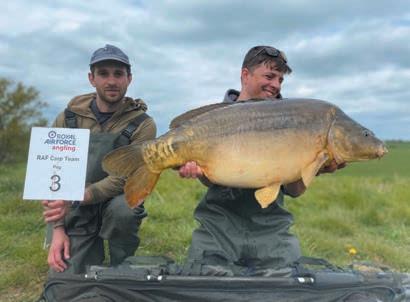
With one big catch probably deciding the round, the last action took place in the final hour as Hope hooked a massive 41lb 14oz catch and with it first place as the final hooter sounded, seconds after he returned the fish to the water after weighing.
Sgt Mathew Curtis and Cpl Ben Caizley came third with two fish, weighing 60lb.
RAF WOMEN’S boxing hit new heights as AS1 Frankie Lyall and AS2 Carys Mainwaring rounded off a historic season with superb displays on the international scene.
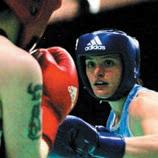


A Tri-Nation silver medal for Mainwaring and a narrow splitdecision quarter-final English National defeat for Lyall has seen the association reach unprecedented levels in 2023.
UKAF boxing chairman Sqn Ldr Karl Whalley said: “I was in the corner for Mainwaring in Wales, and equally proud to have been part of Frankie Lyall’s journey to where she is today.
“With such incredible talent, and a new generation of boxers, coaches and officials setting incredibly high standards within the Forces, we are well placed to build on such outstanding results.”
Lyall’s campaign began with silver medals already secured in the Women’s Winter Box Cup and Sweden’s Golden Girl Championships in Borås in March, which qualified her for the English National Championships.
She then became the RAF’s first UKAF female champion on HMS Drake, also Plymouth, defeating the Army’s Pte Lily Devlin in the 57kg category.
In the national event Lyall continued her dominance with a unanimous victory over Jersey’s Calli Bushall, before landing a tough quarter-final draw against the GB No.1 seed Vivien Parsons. An extremely close contest went the way of Londoner Parsons by split decision.
AS2 Mainwaring contested the Welsh National Finals in Cardiff. Keen to secure her place in the Welsh Squad for the GB Tri Nations and become the second RAF Boxer in two years to achieve this feat, she did not disappoint. She scored a clear points victory over the Army’s big puncher Taylor Allan, from Swansea.
Next up was the GB Elite Three Nations tournament at the Magna Carta
Centre, Rotherham, that saw Carys matched against the 2023 English Champion Alex Bryant in the event’s final.
With gold at stake and neither willing to take a step backwards a superb fight went the way of Bryant on a split decision.

5 pages of the


“With such incredible talent and a new generation of boxers, coaches and officials setting such high standards within the Forces, we are well-placed”









Carmen (15)
In cinemas now, Dazzler Media
THE PATH from Mexico to LA becomes a heady but dangerous dreamscape in this entrancing tale of two unlikely people thrown together, on the run – a modern-day reimaging of Georges Bizet’s 1875 opera.
Aidan (Paul Mescal, Aftersun, Normal People) is an ex-marine who lives with his sister. With no job, or plan, he finds himself volunteering with the border patrol. Joining his friend Mike on the rounds, he notices in him a sadistic streak: when asked if he has learnt to speak any Spanish, Mike replies ‘Why? Do you know how to speak deer?’.
When coming across a group of illegal immigrants, Mike becomes trigger-happy, and through a twist of events, Aidan ends up fleeing the scene with a young Mexican
woman, the eponymous Carmen (Melissa Barrera, In The Heights).
The distinguishing feature of this film is its use of music and dance as a means of character expression. This is hardly surprising when you consider that it was cowritten and directed by Benjamin Millepied, an accomplished dancer and choreographer. Whilst some moments arise naturally from the story, others take form as a setpiece, emotions converging to the point of breaking out through fantastical performance, as though they couldn’t be expressed any other way.
At the point that Aidan and Carmen come into contact, they have both lost everything. The best escape plan is for them to head to a nightclub in LA, run by Masilda
Ip Man (15)
On Icon film channel, DVD, Blu-ray and digital now


Kong, young martial artist Ip intervenes in a mugging and finds himself embroiled with a human

(Rossy de Palma, Women On The Verge of a Nervous Breakdown, The Flower of My Secret) a spiritual sister of Carmen’s late mother, who presides over the film like a mystic
dealer of symbols.
There is a chemistry between the cast that ignites the story, that brings out the sexual desire and psychic longing. With cinematography and
performances that complement its dreamy affectations, Carmen is bewitching if not simply intriguing. 4 out of 5 roundels
Review by Sam Cooney
trafficking ring and a league of fighters headed by the obviously sinister Mr Stark (Sergio de leso).

TV’S NOEL Fitzpatrick will bring his show Beyond Supervet to the stage this autumn in a nationwide tour.
Kicking off on September 29 at Leas Cliff Hall in Folkestone, he will travel to venues across the UK on a 25-date tour which culminates at Guildford’s G Live on December 2.
The evening promises to be full of fun and fascinating insights into the things Noel (inset) has learned
Ip Man: The Awakening is another film in the extensive franchise based on the Hong Kong-based grandmaster, who popularised the practice of Wing Chun and famously trained Bruce Lee as one of his students. In this instalment the baton is handed to Miu Tse (above) to play the origin of the legendary Ip Man, which he does with a comparatively lighthearted performance, though he proves time and again that he can throw down.

from the thousands of animals he has helped throughout his veterinary career, all told to a powerful soundtrack which reinforces the huge role music plays in his life. He said: “Through my life and career I have many stories to tell from the animals who inspire me and have healed me through their demonstrations of bravery, openness and kindness.”
l Go to: noelfitzpatricklive.com for tour details.
Though there have now been more than 10 films about Ip Man (the best of them featuring an untouchable Donnie Yen) the real
draw for the series is in the combat, showcasing the intricate close combat manoeuvres and brutal flurries of blows.
In Ip Man: The Awakening, these fight scenes are initially overwhelming, with multiple cuts every few seconds dizzying and dislocating you from the action. But once you become accustomed to this style, you can appreciate the talent of Tse, especially in a final showdown with two British henchmen and practitioners of Bartitsu, an historic martial art that combines boxing, jujitsu and cane fighting.
WE HAVE copies of Ip Man: The Awakening on DVD up for grabs. For your chance to win one, tell us: Who plays the sinister Mr Stark in the latest instalment of this tightly-choreographed, fight-filled martial arts saga?
Email your answer, marked Ip Man competition, to: tracey. allen@rafnews.co.uk or post it to: RAF News, Room 68, Lancaster Building, HQ Air Command, High Wycombe, HP14 4UE, to arrive by July 7. Please mark on your entry whether you prefer to win the film on DVD or Blu-ray and include your full postal address.
Along the way, Ip reconnects with old friend Bufeng (Chen Guan Ying) and his sister Chan (Zhao Yu Xuan), but will find himself drawn in to fight for their lives. The story is messy and melodramatic at the best of times, but serves only to set up these fight scenes, in which you can let yourself get lost.
3 out of 5 roundels

Review by Sam Cooney

FATHER BROWN star

WHO DARES WINS star Ant Middleton will head the cast in the new action-thriller film Shelter, due to start production next month.

The film follows Middleton as hitman Rob Shaw, who travels to a remote location after a distress call from his ex-wife.
On arrival, he is met by his estranged father Jim, an ex-director of the Ministry of Defence, his ex-wife, her new husband and Rob’s two young daughters. Jim explains that a global nuclear event is imminent and invites Rob to join them in a bunker beneath the house. Rob rejects the invitation and attempts to leave just as the bombs begin to fall – he has no place or purpose in this new reality. However, when an anarchic gang of ex-soldiers take control of the bunker, his skills and dangerous mindset become the very thing the family needs.
Former British Special Forces soldier Middleton, who had a formidable career in the UK’s elite forces, including the Marines, 9 Parachute Squadron and the Special Boat Service, is known for his role as Chief Instructor on Channel 4 reality show SAS: Who Dares Wins
He said: “Normally I’m doing the screaming and shouting but stepping into the acting world the tables have well and truly turned. With an awesome team at my side, there really are no excuses not to make ripples through the industry.”
Scott Vickers, the film’s writer and director, added: “Bringing Ant Middleton in as the lead role in this project was huge. Film lovers talk a lot about the need for authenticity and escapism in film, well, I can tell you that all the action sequences you’ll see Ant doing on screen in Shelter he has done in reality.
“Ant also provided guidance and insights for the final draft of the script. One conversation about a particular knife scene stands out. Ant went into great detail about it and once he’d finished a very detailed commentary everyone around the table just sat in silence for a while.”
Middleton has also led the hit show SAS Australia and has fronted other popular TV shows including Mutiny, that re-enacted Captain William Bligh’s famous ‘Mutiny on the Bounty’, and the survivalist programme Escape, centred on placing skilled engineers in precarious situations.

Mark Williams is among the cast of new comedic drama The Effects of Lying, launching on ITVX on July 6. The film follows dutiful husband and loving father Naveen (Ace Bhatti), whose life falls apart over a series of shocking events taking place over the course of just one day. Decades of festering secrets are finally exposed and Naveen is forced to face up to some home truths.
Leading the cast are Bhatti (Bohemian Rhapsody, Line of Duty), Laila Rouass (Holby City, Spooks), and Lauren Patel (Everybody’s Talking About Jamie), alongside Navin Chowdhry (The End of the F***ing World, Our Girl), Shaheen Khan (Bend it Like Beckham) and Mark Williams (Harry Potter). James Hey (Doctors) has written the script.

Naveen has lived his life by the book; he’s a loyal husband and loving father. He’s sacrificed everything for his family, but today is going to be different. After finding his teenage daughter Simran (Patel) secretly gorging and his dissatisfied wife Sangeeta (Rouass) in bed with his brother (Chowdry), lies come pouring out and the truth is uncovered.
An ITVX spokesperson explained: “Naveen is described as one of those people that suppresses – he’s suppressed the little voices inside him that something’s not right in his life, and he’s been doing it for decades. All these tiny lies have accumulated into a life built on them – and today’s the day it all comes crashing down.
“He must now get to grips with the key relationships in his life that he bases his identity on. What is he, if not a husband, a father, a brother?
He’s allowed himself to be passive for too long, pushed around by the currents of other people’s whims and desires. He must learn to take responsibility for his own life and happiness.”
Bhatti said: “Naveen is a man who tries to do right by his family. He’s trying to keep a fractious family
together but unfortunately within 24 hours he learns three very deep secrets that… break his life apart. Within a day his whole life becomes shattered but that propels him to make certain decisions...It’s a universal story.”
He added: “It’s the quiet people in the world who do the most work… [the people] we don’t notice.
"It’s the quiet people who keep us together. It’s good to appreciate those people now and again”
Laila Rouass explained: “Sangeeta finds herself trapped. I think she’s disappointed in herself and her life has taken a route that she promised herself it never would. It’s a real crossroads
FAMILIAR FACES: Rouass, Williams and Bhatti star in The Effects of Lying

Forrester is the true story of Spitfire and Hurricane pilot Wg Cdr Robert Stanford Tuck, DSO, DFC & bar, known as one of the RAF’s top-scoring aces. Thrust into a leadership role during the Dunkirk evacuation, Tuck went on to become the first Spitfire ace and a key player in the Battle of Britain. Despite facing adversity and overcoming numerous setbacks, he remained resolute and became one of the leading aces in the RAF, credited with 29 confirmed kills. (See p19 for photograph of Tuck with WWII legend Douglas Bader.)

In January 1942, while on a mission, he was hit by anti-aircraft fire and was forced to land in
Edited by Tracey Allenwe’re finding her at... A lot of women can relate to somebody like Sangeeta. It’s not a cultural thing, it’s more of a reflection on the opportunities you didn’t take… it’s really quite tragic, I think, where she is.”
The film was shot on a micro-budget over 12 days in Ealing, West London.
Rouass added: “When you do something like this no-one does it for the money. People do it because they’d really love to do it. You can feel that on set and that’s where it feels special. It’s a real little gem.”
Talking about his character, Navin Chowdhry (inset left) said: “Harvinder is Naveen’s younger brother and he couldn’t be more different. He’s loud, he’s brash, he’s arrogant, he’s hedonistic… he brings a certain energy to the family. It kind of kicks off when he arrives.
“I come from a very volatile Punjabi background and there were elements in
the script I thought ‘yes – I believe this. I think it’s worth being part of this story.’
“There’s a synchronicity and ensemble that you need to get through any shoot, particularly of this nature. We were given the space by the director [Isher Sahota] to sometimes just go off page and improvise slightly and try to bring more elements to what was already there and to have that license, particularly on a shoot of this nature… to be given the time to improve with actors you have a lot of respect for was a real joy, to work on a piece you believe in and then be given the opportunity to just add your own take on it. It’s a good place to be.”
l Go to: itv.com for more information about ITVX.
THE BBC has released a gallery of first-look photographs from the second series of World on Fire, coming soon to BBC One and iPlayer. The images feature returning cast members Lesley Manville (The Crown, Magpie Murders) as Robina, Blake Harrison (The Inbetweeners, A Very English Scandal) as Stan and new cast members Mark Bonnar (Guilt, Shetland) as the mysterious Sir

France. Captured by the Germans, he spent two years as a prisoner of war in Stalag Luft III, escaping in 1945.
Tuck retired from the RAF in 1949 and became a mushroom farmer in Kent. He died in 1987.

First published in 1956 and recently re-issued, Fly For Your Life has been described as a tribute to Tuck’s bravery and sacrifice, and
a testament to the strength and determination of the human spirit.
To be in with a chance of winning a copy, answer this question correctly:
When did Robert Stanford Tuck retire from the RAF?
Email your answer, marked Fly For Your Life book competition, to: tracey. allen@rafnews.co.uk or post to: RAF News, Room 68, Lancaster Building, HQ Air Command, High Wycombe, HP14 4UE, to arrive by July 7.

James Danemere and Gregg Sulkin (Runaways, Pretty Smart) as brave but reckless RAF pilot David.
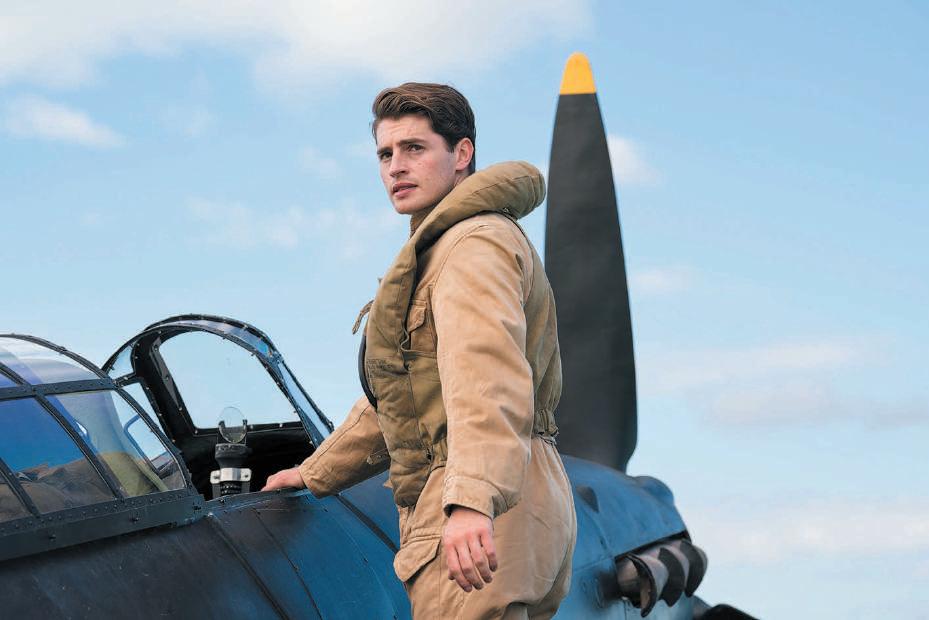
RAF pilots are sent to destroy German bombers prowling the skies above Manchester, with rescue operations underway on the streets below. The true reality of war has arrived in Britain.
Telling the story of World War II through the eyes of ordinary people, following intrepid young
heroes fighting for freedom, series two will take viewers from the war-torn streets of Britain deep into Nazi Germany, the resistance within occupied France, and the brutal sands of the North African desert – where troops struggle to adapt to a very different kind of combat.
The first series of World on Fire recently returned to BBC iPlayer, where it can be streamed in full.
You can email photos for announcements on this page to: tracey.allen@rafnews.co.uk
GURNHILL Norman WO, passed away on April 20. Born on April 14, 1928 in Wakefield, Yorkshire. He later decided that he wanted to join the Royal Air Force and whilst the war raged he walked to the RAF Recruitment Office in the centre of Wakefield and presented himself to the Sergeant in charge. Having completed the application forms he gave them to the Sergeant. The application was read and Norman thought he was going in, but the Sergeant leant over and said: “You should be at home, because if you’re not there in an hour I will have to tell Ivy as you are too young to join up.”
He looked at the Sergeant, backed out of the office and ran home. It was, he told his son Justin, just his luck that the Recruiting Sergeant knew his mother.
Norman finally joined in 1945 and although the war was coming to an end he decided to stay in the RAF. His career from AC to Warrant Officer was, he said: ‘full of surprises and postings’ – Singapore, Germany and the Maldives were just three. He was in Air Traffic Control throughout his service. Gone but not forgotten, God rest his soul.
VANN John Blair ex RAF Digby, Sigs Unit 399. Died May 4, aged 86, after a long illness bravely borne. Will be greatly missed by Maureen (wife) and children John, Carole, Jacqueline and Christopher. Also by all grandchildren, greatgrandchildren and one greatgreat-grandson. He was our shining star and will be forever in our thoughts.
WATT Catherine Grace (née Leech) Former WAAF Corporal Passed away 12 June, 2002
“Twenty one years gone The pain and sorrow lives on.”
WATT Alfred Warrant Officer retired Passed away 25 May, 2009 Both remembered with love and sadly missed.

SEEKING any air or ground crew from 203, 210 and 205 Sqns involved in Shackleton operations from RAF Changi and RAF Labuan during the Indonesian Confrontation of 1963-65. Please contact: Tony Fairbairn: email: tony. fairbairn@btinternet.com or call: 07752 337907.
SEEKING anyone in the 309th entry at RAF Hereford from May 1967 until April 1968. Please email Ian Dall: iandall622@gmail.com.
LOOKING for any members of the 47th entry TG19 Hereford 62-64. Any still about? Please contact Jim Cummins via email on: Carol_cummins@aol.com or call: 01302 532865, 07517 416702.
THE RAF Masirah and RAF Salalah Veterans


Association Reunion Gala Dinner is to be held on Saturday, October 7 at the Hatton Court Hotel, Upton St Leonards, Gloucester GL4 8DE. All members are welcome to attend. If you are interested in joining the Association please contact our Membership Secretary, Harry Player, on: chrisarry714@gmail.com for further information.
WORLD WAR II fighter pilot Norman Enders, who served in Africa, has died aged 98.
Called up to the Air Force on April 7, 1943, he was instructed to report to RAF Regents Park, No 1 RAF Aircrew Reception Centre (ACRC), where he was selected for air crew training and recommended for a commission.
THE RAF and Defence Fire Service reunion will take place from Friday, November 3 to Sunday, November 5 at the Sketchley Grange Hotel and Spa, Sketchley Lane, Hinkley, Leicestershire, LE10 3HU. For more information please visit: rafanddfsa. co.uk/reunions or you can contact Don Pape, email: donaldpape252@yahoo.com or Mike Clapton, email: fire. bucket@btinternet.com for any further questions. If you are not a member and wish to join, please visit the website to see how to join. We welcome new members.
RAF Armourers past and present. Do you know that the RAF Association has an Armourers Branch? The Branch’s aim is to provide welfare support and comradeship for all who have served or currently serve as an RAF Armourer. See: rafaarmourers.co.uk or contact the committee via: plumbersrest@outlook.com.
There is no charge for conventionally-worded birth, engagement, marriage, anniversary, death,in memoriam seeking and reunion notices. For commercial small ads contact Edwin Rodrigues on: 07482 571535. We cannot, under any circumstances, take announcements over the telephone. They can be sent by email to: tracey.allen@rafnews.co.uk. Please note that due to the coronavirus pandemic we are currently unable to accept notices submitted by post.
The publishers of RAF News cannot accept responsibility for the quality, safe delivery or operation of any products advertised or mentioned in this publication.

Reasonable precautions are taken before advertisements are accepted but such acceptance does not imply any form of approval or recommendation. Advertisements (or other inserted material) are accepted subject to the approval of the publishers and their current terms and conditions. The publishers will accept an advertisement or other inserted material only on the condition that the advertiser warrants that such advertisement does not in any way contravene the provisions of the Trade Descriptions Act. All copy is subject to the approval of the publishers, who reserve the right to refuse, amend, withdraw or otherwise deal with advertisements submitted to them at their absolute discretion and without explanation. All advertisements must comply with the British Code of Advertising Practice. Mail order advertisers are required to state in advertisements their true surname or full company name, together with an address from which the business is managed.
Initial training at No.17 ITW, based at Scarborough College, from June 1943 was followed in early October with a posting to No. 4 Elementary Flying Training School (EFTS) at RAF Brough, where he trained on the De Havilland Tiger Moth.
In early 1944 he was selected for the Empire Air Training Scheme and sent via the Aircrew Despatch Centre, Heaton Park, Manchester to Liverpool to join a convoy.
Arriving in Cape Town, the pupil pilots travelled north to join the RATG Rhodesia Air Training Group. All new arrivals then went to RAF Highfield camp.
RAFA befriender James Baillie, from the Association’s Chingford branch, of which Norman was an honorary member, said: “Norman continued flying training at 28 EFTS on an unusual aircraft in RAF service, the Canadian Fleet Cornell, which was used for aerobatic training and formation flying training, before progressing to 20 Service Flying Training School (SFTS) on the Harvard for fighter-bomber training. This included aerial shooting at towed targets and bombing practice.
“In January 1945 he sat the final written exams for aircrew. He continued final


GOOD IMPRESSION: Norman with 27F(Chingford) Sqn ATC cadets last December. Inset, as a young airman

flying training with 22 SFTS and transferred to RAF Moffat for further bombing range and aerial gunnery training in March 1945 before the envisaged posting to a P-47 OCU.”
Mr Baillie added: “The powers that be decided after VE Day that his envisaged frontline service with a Republic P-47 Thunderbolt fighter-Bomber Squadron in SEAC theatre against the Japanese was not required and in June 1945 Norman was recalled to the UK.
“He was posted to radar training at RAF Suttonon-Hull and then to RAF Yatesbury Radar School in Wiltshire in early 1946, and was demobbed in April.
“He later worked with the NHS Mass X-ray Mobile Unit as a consequence of his technical knowledge of radiation and microwaves from his radar course in the RAF.

“Norman’s flying career was reinvigorated in 201922 with flights from North Weald to aircrew reunions at Halfpenny Green
PRESENTATION: Vet Norman, third from left, received honorary RAFA membership in May 2022
(formerly RAF Bobbington) with Project Propellor. He frequently reminisced about the exceedingly loud noise of the Harvard’s Pratt & Whitney radial engine and on VE Day last year at North Weald he saw and heard a Harvard in flight for the first time since 1945.”
Mr Baillie said cadets from No.27F (Chingford) made an immediate impression on Norman when they gave a display of precision static drill at his care home in East London last December.
No.27F, with FS Ian Sinclair from RAF Northolt, mounted an honour guard as Norman’s funeral cortege entered the chapel at Manor Park Crematorium, East London, on May 16. RAFA Chingford presented Standards and recited the Kohima epitaph as the Last Post was sounded at the committal.
Mr Baillie added: “Norman displayed a resilience, a quiet fortitude in the face of gathering illness.
“He was always of impeccable deportment.”
Solve the crossword, then rearrange the 10 letters in yellow squares to find an RAF term.
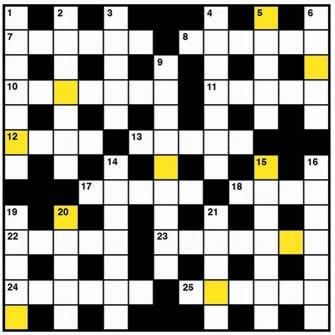
The winners of our Prize Crossword and Prize Su Doku puzzles will receive a recent top aviation title – please send your entries to the address printed in the adjacent Su Doku panel, to arrive by July 7.
Prize Crossword No. 339 winner is: Robert Manley, Exeter.
Across
7. Participate with little woman in hearty clinch (4,2)
8.See 19 Down
10. Horse which keeps battery going? (7)
11. Without mum, machine grows hollow (5)
12. Don’t close duck enclosure (4)
13. First set implement on chair (5)
17. Grace has some summer cyder (5)
18. Exercise the French footballer? He’s not French! (4)
22. Oddly, three at nurse (5)
23. Six balls expected but long-delayed (7)
24. Great conductor’s childish pleasure? (6)
25. Devotee has right church in country (6)
Down
1.And 20 Down. They really help pilots out (7,5)
2. Keep dialect distorted (7)
3. Badges for high-fliers (5)
4. Ooh, Nick taken up in chopper! (7)
5. Bill originally escaped despite Iron Curtain threat (5)
6. Landlord takes top off drug (5)
9. Crucible character embraces the empty RAF plane (9)
14. Presumably, it inspires Manchester City players (3,4)
15. Green composer I leave to worker (7)
16. Woodland creature to always allow outside (7)
19.And 8 Across. How’s stardom affected missiles (5,6)
20.See 1 Down
21. Faber destroyed Russian aircraft (4-1)
Address...............................................................................................................


DEBORAH AYORINDE (Them, Truth Be Told)
stars as Nina, the estranged daughter of self-made millionaire Stephen Richards played by Hugh Quarshie (Stephen, The Murder of Stephen Lawrence) in the glossy, high stakes family drama Riches, available on ITVX now.

Sarah Niles (Ted Lasso, I May Destroy You) plays Stephen’s second wife, Claudia, and Brendan Coyle (Downton Abbey, Requiem) is Stephen’s trusted advisor and confidante, Gideon. Hermione Norris (Cold Feet, Luther) is Stephen’s long-standing and faithful PA, Maureen.
Riches focuses on the exploits of the brash, super-successful and wealthy Richards family.
Stephen is one of the UK’s most successful black businessmen, with an undeniably ruthless streak, and his Flair & Glory products are the market leader in black hair and beauty.
After 20 years of success, he’s at the helm of a multi-million-pound cosmetics empire and is reaping the rewards of his ambitions.
Whilst in New York, Nina and Simon (Emmanuel Imani), his estranged children from his first marriage, have established themselves as business people in
their own right, each successful in their own field.
When Stephen suffers a stroke, the family’s world comes crashing down. As his life hangs in the balance, his different sets of children are about to collide. With secrets and lies rising to the surface and the Richards empire at stake, it's going to be a complicated family reunion.
Ayorinde said: “Nina is a powerful woman, strong and smart…sexy and feminine. I love the fact that she represents a powerful woman who’s still very in touch and in tune with her femininity.”
Fill in all the squares in the grid so that each row, each column and each 3x3 square contains all the digits from 1 to 9.

Solutions should be sent in a sealed envelope marked 'Su Doku' with the number in the top left-hand corner to RAF News, Room 68, Lancaster Building, HQ Air Command, High Wycombe, Bucks, HP14 4UE, to arrive by July 7.
The winner of Su Doku No: 349 is: Mr P G Brewer, Pickering, North Yorkshire.

TOP NAMES Elijah Wood (The Hobbit: An Unexpected Journey), John C. Reilly (Stan and Ollie), Jennifer Connelly (Top Gun: Maverick), Christopher Plummer (The Sound of Music), Crispin Glover (Back to the Future) and Martin Landau (Ed Wood) star in sci-fi title 9
The film is based on Shane Acker’s 2005 Academy Awardnominated short film of the same title, which he directed and coanimated while still a student. Tim Burton (Beetlejuice, Batman, The Nightmare Before Christmas) saw the 10-minute short and decided to co-produce the feature film version. Acker remained as head director and story writer for the feature film.
The world’s machines have turned on mankind and sparked social unrest – decimating the human population. As the world
falls to pieces, a mission begins to salvage the legacy of civilisation, and a group of small ‘stitchpunk’ creations is given the spark of life by a scientist. This small group of creatures must summon individual strengths well beyond their own proportions in order to outwit and fight against the monster machines.
We have copies of 9 to own on DVD and Blu-ray.

To be in with a chance of winning one, simply name one of the stars who appears in 9 Email your entry, marked 9 film competition, to: tracey. allen@rafnews.co.uk or post it to: RAF News, Room 68, Lancaster Building, HQ Air Command, High Wycombe, HP14 4UE, to arrive by July 7.
Please mark on your entry whether you prefer to win a copy on DVD or Blu-ray and include your full postal address.